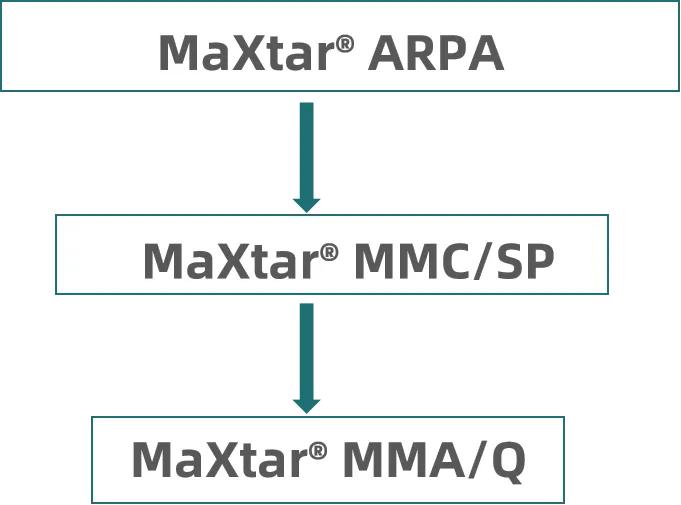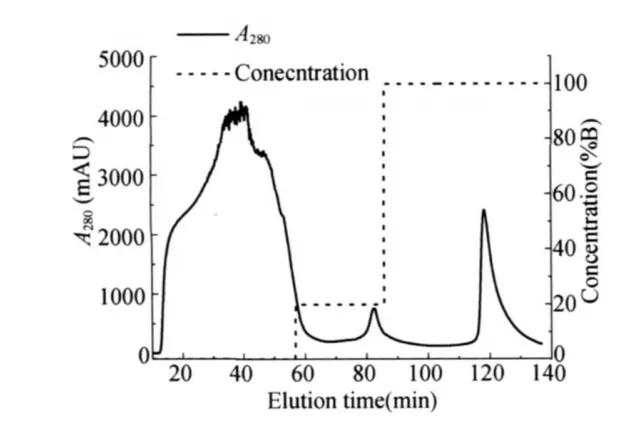November 26, 2024
Tag:
GLP-1 (Glucagon-Like Peptide-1) is a hormone that plays a significant role in regulating blood sugar levels.
In recent years, GLP-1 and its analogues have received widespread attention in the treatment of diabetes. Due to their ability to stimulate insulin secretion and inhibit glucagon secretion, they have become potent hypoglycemic drugs recommended by the American Diabetes Association and the Chinese Diabetes Society [1-2].
GLP-1 analogues include exenatide, lixisenatide, liraglutide, dulaglutide, semaglutide, and albiglutide, among others [3]. The GLP-1 drugs that have been launched on the market mainly include beneglutide, exenatide, liraglutide, lixisenatide, long-acting exenatide encapsulated in poly (lactic-co-glycolic acid) (PLGA), albiglutide, dulaglutide, semaglutide, polyethylene glycol lixisenatide injection, and oral semaglutide [4].
However, the biological activity of GLP-1 and its analogues is susceptible to the influence of their low purity, and different purification routes are required based on the development strategies and production characteristics of different peptides (Figure 1). Currently, the mainstream processes for GLP-1 analogues under research are as follows:
1. Modification of the GLP-1 structure itself
2. GLP-1 analogues linked to antibody Fc fragments
3. GLP-1 analogues linked to HSA fragments
4. GLP-1 analogues without conjugated complex ligands or side chains
5. GLP-1 analogues linked to PEG or fatty acid side chains
Therefore, the development of effective purification methods is crucial for enhancing their biological activity and clinical applications.

Figure 1: Development Strategies for GLP-1 Analogues [5]

Figure 2: Schematic Diagram of the Molecular Structure of Liraglutide

Figure 3: Schematic Diagram of the Molecular Structure of Semaglutide
Introduction to Purification Processes
The upstream preparation processes for GLP-1 and its analogues can be broadly divided into two categories: biological fermentation methods (such as liraglutide and semaglutide) and chemical synthesis methods (such as tirzepatide and epenalutide).
Chemical Synthesis Method:
Taking the preparation of epenalutide as an example, amino resin is used as the raw material. First, the resin is deprotected from Fmoc, and then amino acids with protecting groups are connected sequentially by condensation until the synthesis of the linear resin peptide is completed. Subsequently, the side chain Mtt protecting group of Lys(Mtt) is removed, and then side chain linkers are connected sequentially by condensation to obtain the epenalutide precursor resin peptide. Finally, epenalutide precursors and their analogues are obtained through cleavage and purification [6].
Advantages:
It allows the insertion of non-natural amino acids (for example, solid-phase synthesis is generally used for semaglutide and polyethylene glycol lixisenatide containing non-natural amino acids); downstream purification is simple, and crude peptides can be obtained through precipitation and centrifugation. The crude peptides are then purified through reverse-phase chromatography to obtain refined peptides [7].
Disadvantages:
The synthetic peptide segments generally do not exceed 50 amino acids.
Biological Fermentation Method:
Escherichia coli/yeast and CHO cells are commonly used, with fusion expression of polypeptides with albumin, Fc, or other tags. The purification and enzymatic cleavage process for GLP-1RA polypeptides expressed as fusion proteins involves membrane filtration, nickel affinity chromatography, reverse-phase purification, and other treatments to obtain high-purity peptide-fusion proteins. After enzymatic cleavage and purification, the polypeptide backbone can be obtained. Alternatively, engineering bacteria can be constructed through steps such as vector construction and transfection, cultured, and induced to express fusion protein inclusion bodies. Subsequently, through denaturation and dissolution, renaturation, enzymatic cleavage, affinity flow-through, and ion exchange purification, GLP-1 and its analogues can be finally obtained [10-12].
Advantages:
High safety, low cost, and large-scale production, suitable for the fermentation of long peptide segments.
Disadvantages:
The downstream purification process is relatively lengthy.
At present, the cost of biological fermentation methods is relatively low. Different upstream preparation processes will also have different requirements for downstream chromatography processes.
|
GLP-1 type |
GLP-1 analog linked to Fc antibody fragment |
GLP-1 analog linked to HSA fragment |
GLP-1 analog without conjugated complex ligand or side chain |
GLP-1 analog linked to PEG or fatty acid side chain |
|
Capture |
Affinity resin |
Blue gel resin |
Nickel/Ion exchange resin |
Ion exchange resin |
|
Polish |
Ion exchange/Hydrophobic Resin |
Anion exchange/Mixed resin |
Ion exchange/Hydrophobic/Reverse phase resin |
Ion exchange/Hydrophobic/Reverse phase resin |
Table 1: Selection of Resins for Different Biological Fermentation Methods


1. Purification Process of GLP-1 Expressed in Yeast/Escherichia Coli

The first and second steps of anion and cation chromatography can remove a large amount of HCP and HCD, yielding relatively pure crude peptides. The third step of reverse-phase chromatography can further remove degraded peptides and isomeric peptides.
2. Purification Process of His-Tagged GLP-1 Analogues Expressed in Escherichia Coli

Escherichia coli expression typically results in inclusion bodies. To dissolve these inclusion bodies, high concentrations of urea or guanidine hydrochloride and reducing agents are added. The use of TED-chelated Ni Chromstar® Excel is recommended. Other affinity resins such as Glutathione Chromstar® 4FF can be suitable for the purification of GST-tagged proteins.
3. Purification Process of CHO-Expressed Fusion Protein GLP-1 Analogues (GLP-1-Fc)

CHO-expressed GLP-1 analogues are FC fusion proteins, and their purification can be referenced from antibody-like protein purification methods. If HSA fusion is involved, Blue Chromstar® FF can be used to replace the first chromatography step in the previous diagram.

Figure 5: Protein A Affinity Purification Chromatogram of GLP-1-Fc Fusion Protein [7]

Figure 6: Blue Sepharose Affinity Purification Chromatogram of GLP-1 Fusion Albumin [8]
References:
[1] American Diabetes Association. Microvascular complications and foot care: standards of medical care in diabetes-2021[J]. Diabetes Care, 2021, 44(Suppl 1): S111-S167.
[2] Chinese Diabetes Society, Chinese Medical Association. Guideline for the Prevention and Treatment of Type 2 Diabetes Mellitus in China (2020 Edition) [J]. Chinese Journal of Diabetes Mellitus, 2021, 13(4): 315-409.
[3] Drucker DJ. GLP-1 physiology informs the pharmacotherapy of obesity. Mol Metab, 2022(57):101351.
[4] LOVSHIN J A. Glucagon-like peptide-1 receptor agonists: a class update for treating type 2 diabetes[J]. Canadian Journal of Diabetes, 2017, 41(5): 524-535.
[5] JIANG Jing-qing, FU Ling, TAN Meng-lu, CHEN Sheng-fu. Studies on glucagon like peptide-1 (GLP-1) analogues: a review. Journal of Chemical Engineering of Chinese Universities, 2020, 34(6): 1327-1338. DOI: 10.3969/j.issn.1003-9015.2020.06.001.
[6] Wei Zhenxing, Meng Tianxing, Hu Liying, et al. A method for preparing an abenatide precursor:
CN201910413558.5[P].CN110183531A[2024-03-07].
[7] Huang Jiacheng, Zhang Baole, Yin Chuanlong, et al.
A purification method for GLP-1 analogue and its application:
CN202111628133.X[P].CN202111628133.X[2024-03-07].
[8] [1]Luo Haiyan, Tan Wanlong, Zhang Yanan, et al. Expression of GLP-1-Fc fusion protein in DG44 cells and its quality analysis [J]. Journal of Nanjing Tech University (Natural Science Edition), 2017, 39(06): 74-81.
[9] [1]Li Xianli, Dou Wenfang, Zhang Xiaomei, et al. Isolation, purification and activity evaluation of fusion protein (GLP-1_(A2G))_2-HSA [J]. Pharmaceutical Biotechnology, 2010, 17(06): 487-492. DOI: 10.19526/j.cnki.1005-8915.2010.06.004.
[10] Wang Weiming, Geng Yuebing, Hu Mingming, et al.
A method for purifying fatty acid acylated insulin and GLP-1 polypeptide: CN202010527826.9[P]. CN111518193A [2024-03-07].
[11] Yin Shiqing, Zhang Jiaqing, Zhu Yongzhen, et al.
A method for in-situ enzymatic cleavage and purification of liraglutide fusion protein: CN202210308152.2[P]. CN114790473A [2024-03-07].
[12] Liang Tao, Gao Ting, Li Jinjun, et al. Isolation, purification, and mass spectrometry analysis of impurities in recombinant Arg^(34)-GLP-1[7-37] [J]. Chinese Journal of New Drugs, 2021, 30(6): 562-568.


Contact Us
Tel: (+86) 400 610 1188
WhatsApp/Telegram/Wechat: +86 13621645194
Follow Us:




 Pharma Sources Insight January 2025
Pharma Sources Insight January 2025


